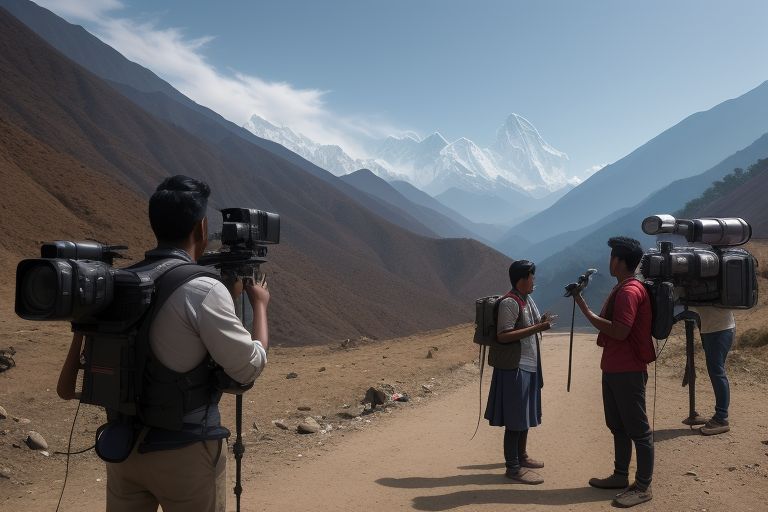When the challenges persist in Nepal’s media sector, a creative YouTube series refreshes the journalism of the country. Similarly, ‘Herne Katha’ which is run by Bidhya Chapagain and Kamal Kumar is arguably becoming the favourite journalistic compilation of several years in Nepal bringing change in the way news and stories are reported and delivered.
Herne Katha was initiated in 2018 mainly focusing on traveling to unheard areas of Nepal and report unexpected stories that go unnoticed. The series is intended to change the object of interest from the political news that usually comprise the first pages of the newspapers, and show the life stories of ordinary Nepalis who are left unheard.
According to Chapagain, their primary objectives are to alter the current idea about journalism in Nepal, and expand their work. Returning to the concept of human interest over and above politics and power, Herne Katha is also set to benefit from rising interest in appearing infotainment. Saying that, this approach has been received well by younger audiences who constitute over 50% of the viewer base of the series.
The popularity of Herne Katha is well timed for media in Nepal that faces several problems. This could be so because although the country obtained democracy in 1990 and opened up the private media, many of them still understudy how to adopt new story telling pedagogy and or sustain their operations financially.
Today there are more than 4,400 web-based selling outlets identified to press council Nepal an authorized media regulatory body of Nepal. But this quantitative growth has prompted questions about the professional standards and ethical code of conduct, and economic sustainability of many outlets and individual journalists.
The financial crisis nature that the Nepali media industry has faced has had drastic impacts on working journalists. Some are almost always denied their wages and others are even offered the chance to go home without pay if they complain. According to the Federation of Nepali Journalists (FNJ), it has been receiving hundreds of wage-related complaints every year.
Besides these financial concerns, the journalists in Nepal are still experiencing the issues related to safety concerns. Events; such as the cases when editors plus reporters received threats in regard to their investigations, evidence that the occupation is dangerous. Non implementation of the Working Journalist Act 2006 continues to be a major issue with many media practitioners remain exposed to unfair working practices.
Still, free and narrative storytelling such as Herne Katha also show that Nepalese journalists are resourceful and innovative in this situation. In doing so they are seeking methods of making themselves heard and reaching their audiences through new formats and online venues.
It also indicates a way forward for media business in Nepal based on the success of the series. Thus, while established media sources decline, new media options provide chances for different styled journalism welcoming new generation audiences and covering untold stories. This shift may possibly rectify some of the monitory problems in the industry and at the same time serve the purpose of enlightening and –most importantly – involving the public.
But to realize sustainable success in Nepal’s media environment, various structural problems should be solved. This means to guarantee the proper application of the legislation that advocates for the rights of journalists, to provide the environment more safe for reporters to operate in, and to advance financial strategies that would encourage good journalism.
Given the on-going formation of democracy in Nepal, a strong and a free media is imperative to the growth and stability of democracy. The example of Herne Katha and other experimentations point to the fact that there is indeed more demand for journalism than what is generally offered as politics. In this conversation, this study posits that by adopting new paradigms in telling their stories and by adopting new formats of disseminating their reportage, Nepalese journalists can perhaps overcome the current hurdles and constructively renewed their important societal function.
Infact the journey of Herne Katha acts as a role model and guideline for those optimistic journalist and media business owners in Nepal. Such endeavours might have the potential to contribute towards growth and development of Nepali journalism and progressive discourse part of which is also to make diverse accounts heard in spite of various challenges.


